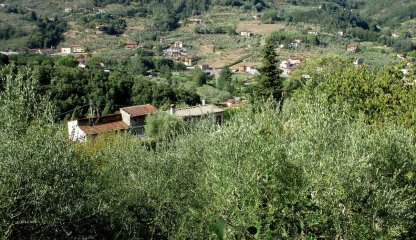Bianco della Valdinievole DOC



A unique nectar sourced between Montecatini and Pescia
DOC Bianco della Valdinievole is one of the smallest wine labels in Tuscany, at least from a quantity standpoint, even though its production zone includes a significant portion of the municipalities between Pistoia and Lucca. The DOC area includes the municipal territories of Buggiano, Montecatini Terme and Uzzano, as well as a portion of Larciano, Marliana, Massa e Cozzile, Monsummano Terme, Pescia and Pieve a Nievole.
Enologically connected to the Lucchese tradition, the viticulture of this area has roots that go back centuries, since the Pratese merchant Francesco di Marco Datini, in the 15th century, claimed that: “Pescia is the great center of the wine market with a specialization in the whites, the Trebbiano wines, which are so characteristic of the Valdinievole.” It’s a true “nobility stamp” that, through its ups and downs, has survived until the present day. In more recent times (the DOC designation was earned in 1976), wineries enhanced the preexisting winemaking tradition by adding in new grape varieties that were then added to Trebbiano toscano. Alongside the white wine, Pistoiese producers then created a Vin Santo that is sold after three years of aging in caratelli (a kind of “wine keg”).
Bianco della Valdinievole has been enjoyed by some of the historical greats like Puccini, Mascagni, and even Totò, who were all frequent visitors to Montecatini Terme, the modern capital of the area.
Varietals
Trebbiano toscano (70-100%). Other possibilities are Malvasia del Chianti, white Canaiolo and Vermentino, either individually or combined, up to 25%, and grapes of other white varietals up to 5%. The yield per hectare cannot exceed 130 quintals.
Trebbiano toscano (70-100%). Other possibilities are Malvasia del Chianti, white Canaiolo and Vermentino, either individually or combined, up to 25%, and grapes of other white varietals up to 5%. The yield per hectare cannot exceed 130 quintals.
Sensory characteristics
Bianco della Valdinievole has a clear, golden-hued yellow color which can veer toward straw yellow; a pleasant scent; a dry, lively, balanced taste, sometimes tending toward fizzy; a minimum alcoholic gradation of 11º for the white and 17º for the Vin Santo. The latter is produced in dry, semi-dry and sweet varieties.
Bianco della Valdinievole has a clear, golden-hued yellow color which can veer toward straw yellow; a pleasant scent; a dry, lively, balanced taste, sometimes tending toward fizzy; a minimum alcoholic gradation of 11º for the white and 17º for the Vin Santo. The latter is produced in dry, semi-dry and sweet varieties.
Gastronomy
This is a wine that goes well with broth-based soups, vegetables, grilled fish and crustaceans. A vast range of baked goods goes well with various types of Vin Santo: a good starting point is the famous Montecatini wafers, but brigidini, a specialty from Lamporecchio, are another good pairing. A vegetable pizza or the renowned giant asparagus from Pescia, cooked al dente, also helps enhance this wine.
This is a wine that goes well with broth-based soups, vegetables, grilled fish and crustaceans. A vast range of baked goods goes well with various types of Vin Santo: a good starting point is the famous Montecatini wafers, but brigidini, a specialty from Lamporecchio, are another good pairing. A vegetable pizza or the renowned giant asparagus from Pescia, cooked al dente, also helps enhance this wine.



